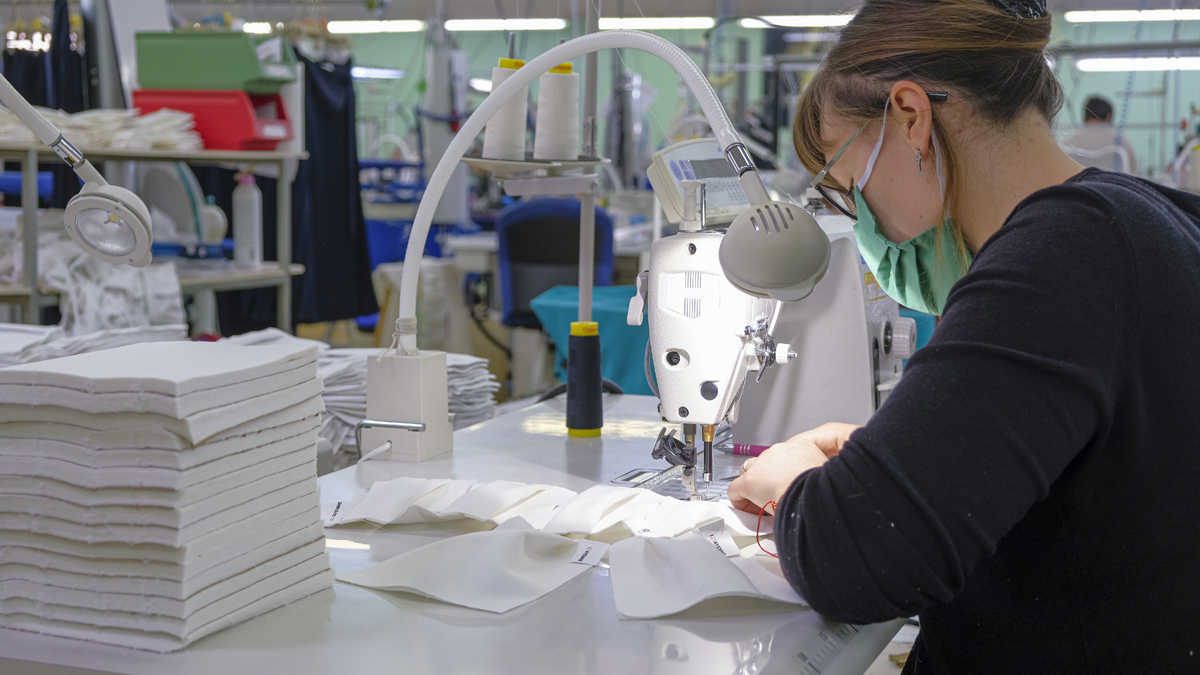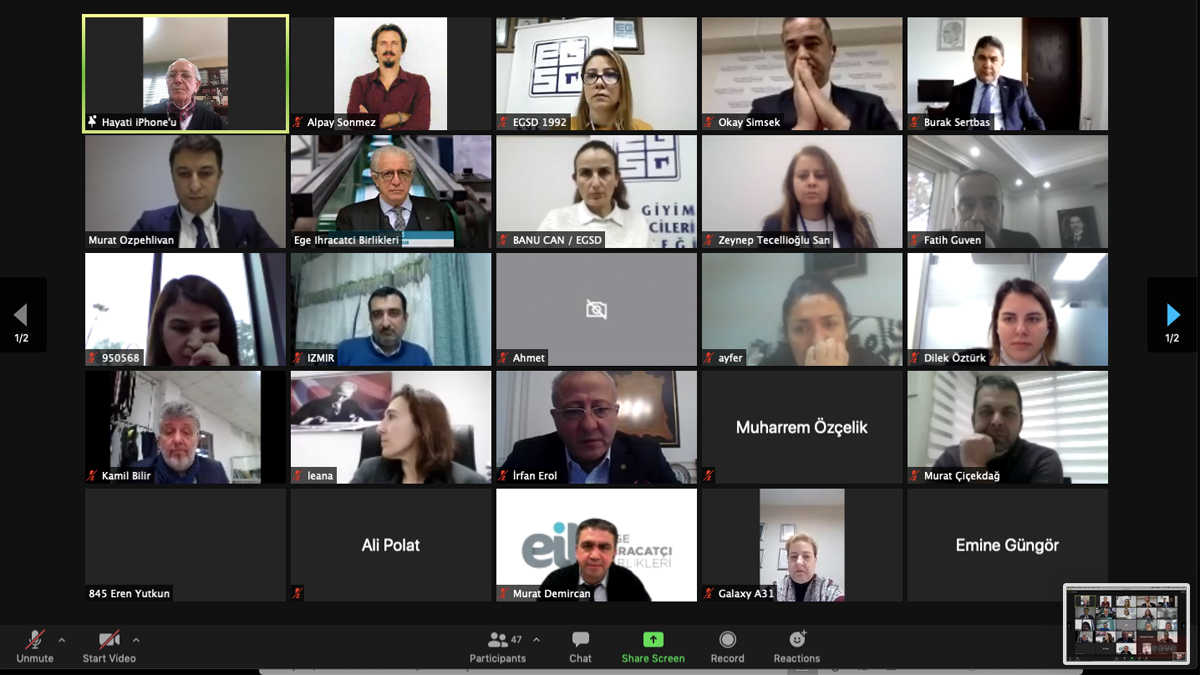The new conditions such as the lockdown and working from home brought about by the Covid-19 pandemic reduced the demand for ready-to-wear products compared to the previous period. Nevertheless, the increasing demand for medical textile production due to the pandemic played a major role in the increase in exports in the ready-to-wear and apparel industry. While the supply sector in the pandemic was discussed in the panel organized by the Aegean Clothing Manufacturers Association (EGSD) and moderated by EGSD Vice Chairman Okay Şimşek, the participants made statements regarding the situation, market balances and needs of the sector.
Burak Sertbaş, Chairman of the Aegean Ready-to-Wear and Apparel Exporters’ Association (EHKİB), who attended the panel, said that despite the pandemic, ready-to-wear and apparel sector exports reached 17.1 billion USD in Turkey, following the automotive and chemical industry as the third largest sector. Explaining that as EHKİB, they have exported 1.3 billion USD and maintained their previous year’s levels, Sertbaş stated that the share of medical products in particular is large.
Turkey’s medical textile exports is 1.4 billion USD
Burak Sertbaş explained that the highest increase was in medical technical textile products with the effect of the pandemic; “Our general medical textile exports in Turkey totalled 1.4 billion USD, with an increase of 2,204%, while medical technical textile exports from the Aegean we had in this process was 92 million USD. Surgical dresses and masks had the main share in the increase in medical technical textile exports. We can raise our medical textile exports to a higher level with the removal of the grant requirement in the export of masks and surgical clothes”.
Technical textile export rate increased by 76 percent
Aegean Exporters’ Associations (EIB) Coordinator Chairman Jak Eskinazi announced that technical textile exports in January – December 2020 reached 3 billion USD, with an increase of 76% in Turkey general, while in the Aegean region, technical textile exports increased by 98%, rising to 194 million dollars. Eskinazi continued his words as follows; “While our technical textile exports and our infrastructure works on this issue have increased, the importance of the Technical Textiles Research and Application Center, which we established in 2014 and whose primary working areas are protective, medical and sports technical textiles, has increased even more in this process. The intersection of TEKSMER’s priority areas with the prominent product groups during the pandemic process has provided our region with an advantage for technical textile production and export”.
Market balances deteriorate; production is expected to shift to Turkey from Far East countries
Saying that as a result of this re-evaluation, an expectation of shift of ready-to-wear and textle production to Turkey from Far Eastern countries, which are dominating it, has occurred, Burak Sertbaş stated that Turkey’s strategic location and competence in production has a great share in this expectation. Sertbaş; “Here, we may be faced with a capacity problem. The only way to overcome this problem is investment. The unforeseen exchange rates make us troubled in decision making about investment”.

Low exchange rates and rising raw material prices are the common problem of the industry
In his speech, Hayati Ertuğrul, Chairman of the Board of EGSD, stated that the impact of the 2020 pandemic created unexpected effects in the ready-to-wear and supply sector in our country as well as all over the world. Ertuğrul emphasized that although exports showed a positive momentum after June, the problems experienced in an area within the ecosystem reflected on the overall sector.
Stating that they had serious difficulties in procuring all kinds of knitted fabrics containing cotton, polyester, bamboo and viscose, especially organic fabrics, Burak Sertbaş argued that the increase in raw material prices brought the production to a halt in some companies. Sertbaş also noted that during this process, there were order cancellations from customers. Indicating that the increases in freight prices as well as the increases in basic input costs such as labour and energy also increased the costs of companies, Sertbaş reminded that these increases could not be reflected in product prices. Sertbaş; “Buyers don’t accept this. “While the increases in raw material prices made procurement difficult, the downward trend of the dollar makes it difficult to have price competitiveness”.
Expressing that they have predictable exchange rate expectations, Jak Eskinazi also touched on raw material prices in his speech. Explaining that cotton prices continue to increase and there are serious problems in the supply of yarn and fabric, Eskinazi said; “For example, it would be an appropriate decision to abolish the 3% tax on American cotton during this period”.
Stating that sustainability and digitalization are the other two important trends rising apart from technical textiles with the effect of the pandemic in the textile and apparel sectors, Eskinazi reminded that the Aegean Exporters’ Unions declared 2020 as the “Year of Sustainability”.


